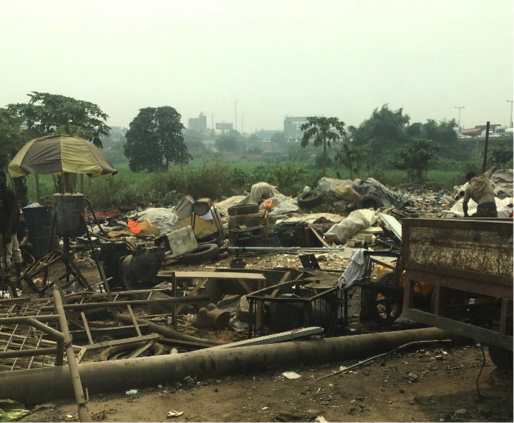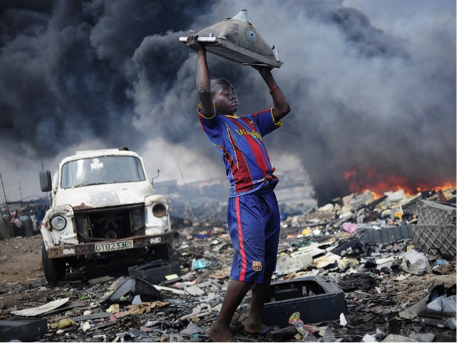E-waste: A Global Threat
Introduction
For years, electronic waste (e-waste) has been the waste stream growing the fastest globally. Considering the valuable metals this sort of waste contains, it would be natural to think that a bustling modern industry took care of its recycling in a sustainable way, but that is far from the case. In fact, no other waste is so much out of control as e-waste; globally, more than 50% of this waste just disappears and much of it pops up in several African countries. Here the waste is handled in various ways, but a common feature is that a lot of the handling is far from adequate and takes place under dubious and substandard working conditions as illustrated in Figures below. The result is that the e-waste recycling in these countries has had and continues to have a significant environmental impact. In this way, much fertile land has become useless, and tremendous clean-up operations must be carried out before the land can again be used for pasture and other agricultural purposes.

This inconsolable situation has been caused by many contributing factors, which collectively have generated entangled challenges that have been unsatisfactorily handled. The problems are basically caused by two factors, viz. the complex chemical composition of the waste, which makes its handling very challenging both chemically and technologically, and secondly, by the lack of implementation of international conventions regulating transboundary movements of hazardous waste, for instance the Basel Convention from 1989. And on the top of this, there are so many other environmental challenges of global proportions that e-waste issues have not reached proper attention. Time for action is therefore overdue.

Need for multidisciplinary knowledge
In general, e-waste is an exceedingly complex mixture of materials that have very different chemical composition and therefore very different properties. In order to address the e-waste problem properly, it is therefore necessary to have technical insight, chemical knowledge, and regulatory competence, understand the dynamics of the global e-waste market, which is constantly under development, and be able to facilitate close collaboration between organizations that are dedicated to e-waste handling. This is indeed a multidisciplinary challenge, and this is reflected in the nature of the material that is posted on this site.
A consequence of this dynamic complexity is that the site has to be under continuous development. The site will therefore be updated regularly after its editorial board has reviewed new material thoroughly. In order to make the site relevant after a modest start, input from readers is required so that mistakes can be corrected and new, relevant material can be posted. That being said, the site cannot and is not aiming at becoming exhaustive, but a solid and trustworthy source for reference to get started.
The level of chemical education required to appreciate, understand, and digest the contents of the documents posted and referred to do indeed vary. In order to indicate which level is required beyond ordinary primary school, the following abbreviations are used:
GC: Up to a Bachelor-degree level in chemistry
UD: Up to a university degree in another natural science
HS: Up to the level reached in high school
The editors of the e-waste site are Venčeslav (Slavko) Kaučič and Leiv K. Sydnes who can be reached by e-mail at [email protected] and [email protected], respectively.
The material is posted under five different categories:
- International and professional organizations dealing with e-waste
- Comprehensive reports
- Books
- Short reports and articles
- Media reports
